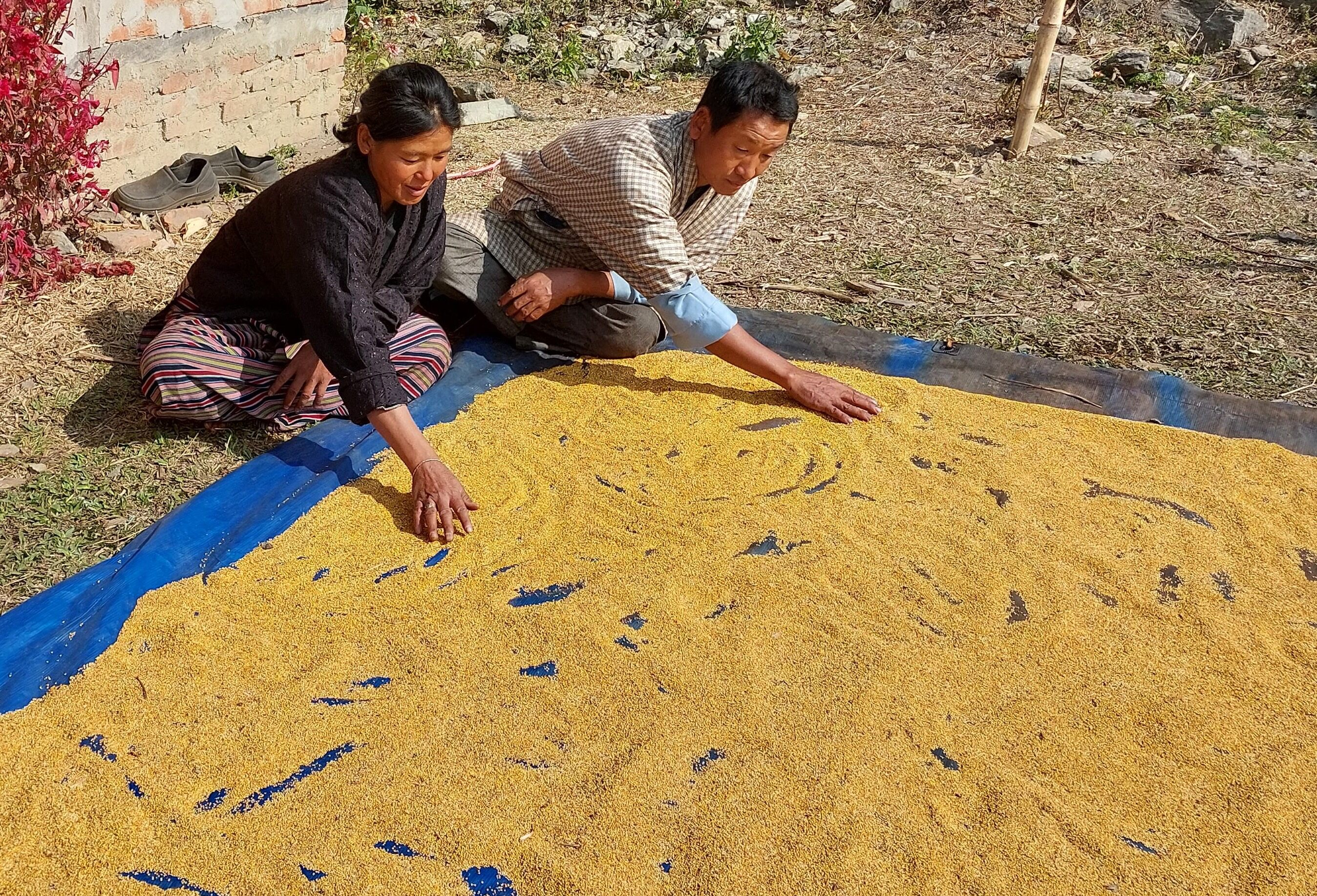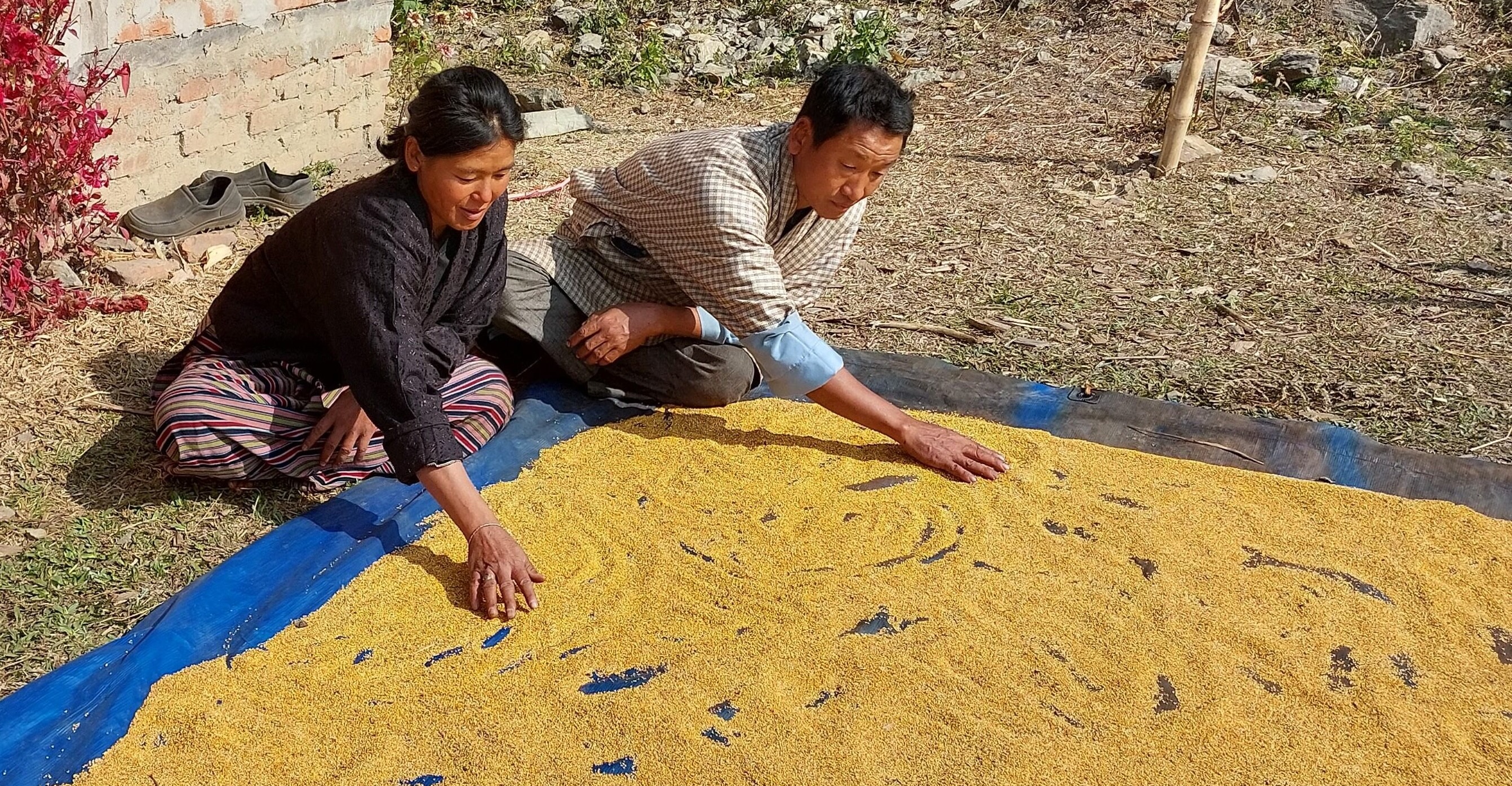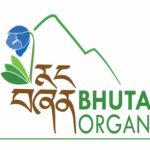In the quaint village of Zamsa, nestled under Bongo Gewog of Chhukha Dzongkhag, the cultivation of “Ashi Heychum” or quinoa has become more than just a farming venture – it has become a transformative force for the 22 households residing there. Initiated by the National Center of Organic Agriculture (NCOA), Yusipang in 2018 with fund support of the Food Security and Agriculture Productivity Project (FSAPP), the introduction of quinoa aimed to boost household food security, enhance nutrition, and generate income for local farmers.
Since its introduction, quinoa has taken root in the hearts and fields of Zamsa, becoming a staple for nearly every villager. Following the harvest of maize in August to September, quinoa serves as a vital winter crop. Among the dedicated cultivators is Mr. Nima, a 44-year-old farmer, and his wife, Mrs. Pema Choden. Their commitment to quinoa farming since 2018 has resulted in an annual average harvest of approximately 100 kilograms.

For Mr. Nima and his family, quinoa has seamlessly integrated into their daily lives, finding a place alongside their traditional millet. The versatile cereal is consumed in various forms – mixed with rice, as porridge, and the tender shoots and leaves are utilized as vegetables. The surpluses are sold in the Farmers Sales Outlet (FSO) in Gedu fetching them, Nu. 100 per kilogram, and if milled, Nu. 130 per kilogram.
The practice of seed saving through the use of air tight containers has become an art for Nima’s family, ensuring a sustainable cycle for the next season. They generously share seeds with their neighbors, fostering a sense of community and cooperation.

However, challenges persist for the quinoa farmers of Zamsa. According to the farmers, poor seed germination and viability exacerbated by temperature and moisture fluctuations, are hurdles that demand careful storage. Transportation issues and the lack of dehusking machines are also obstacles that, if addressed, could unlock the immense potential for organic quinoa production and marketing in Zamsa village.
Despite these challenges, the villagers are optimistic about the future. They envision marketing quinoa as a special nutri-cereal to emerging ecotourism lodges in Jigmechu. With increased awareness and advocacy on preparing local dishes using quinoa and millet, there is a growing expectation that household utilization of quinoa will further rise, contributing to the overall well-being of the community.
The success of quinoa in Zamsa village stands as a testament to the transformative power of sustainable agriculture, community collaboration, and the adoption of nutritious crops in shaping a resilient and prosperous future.
Article By: Kinley Om, Field Crop Program
1,834 total views, 1 views today




